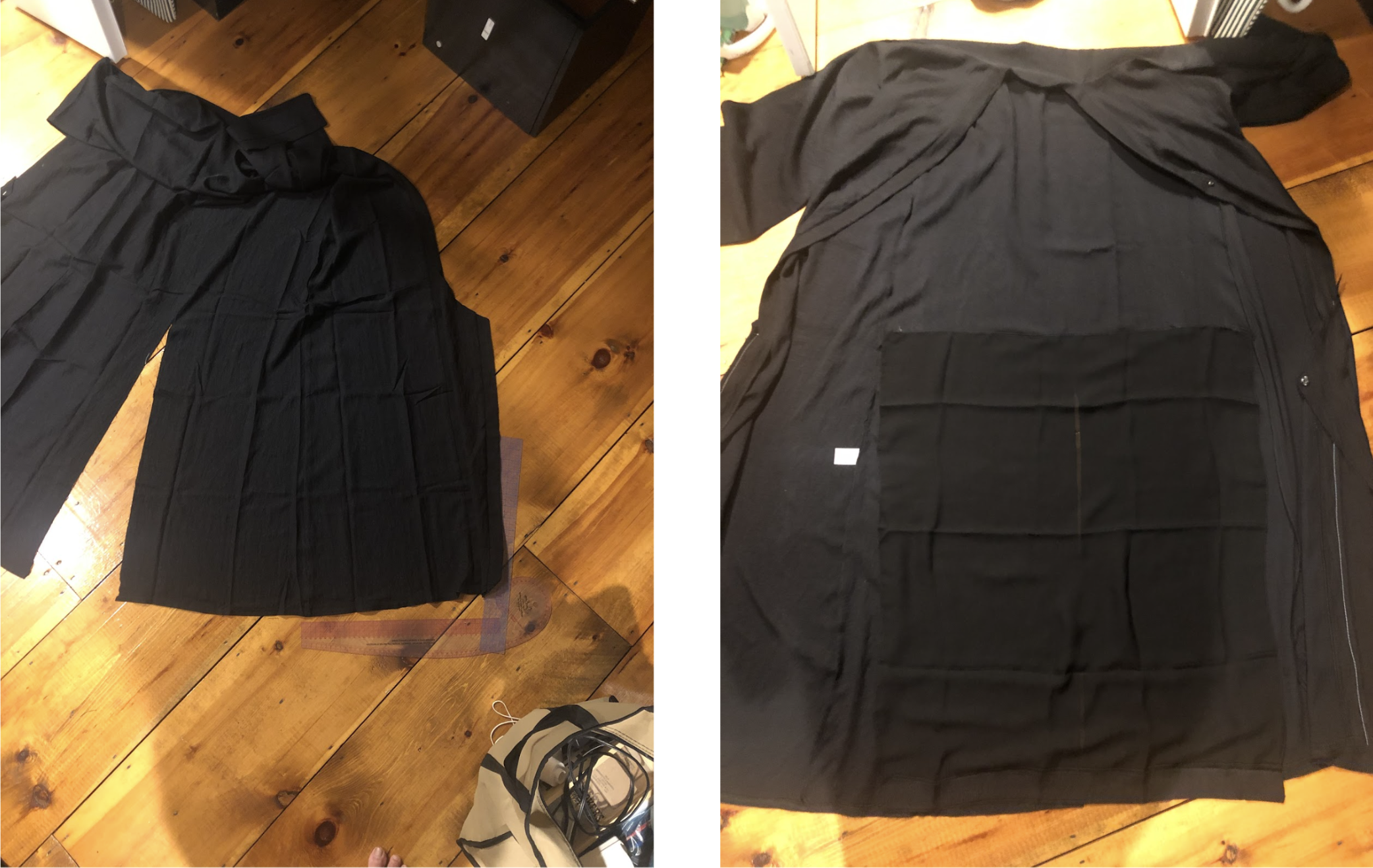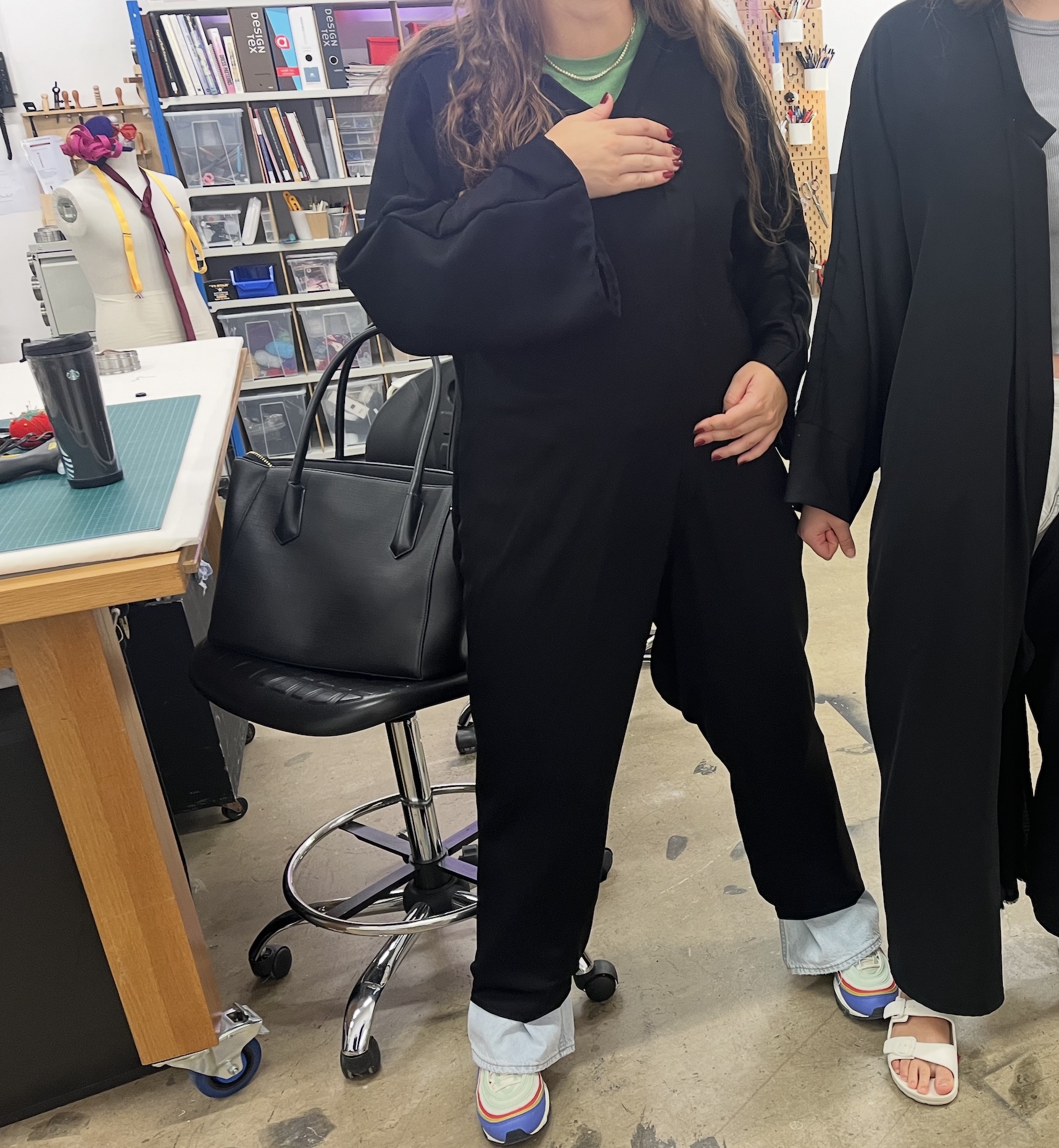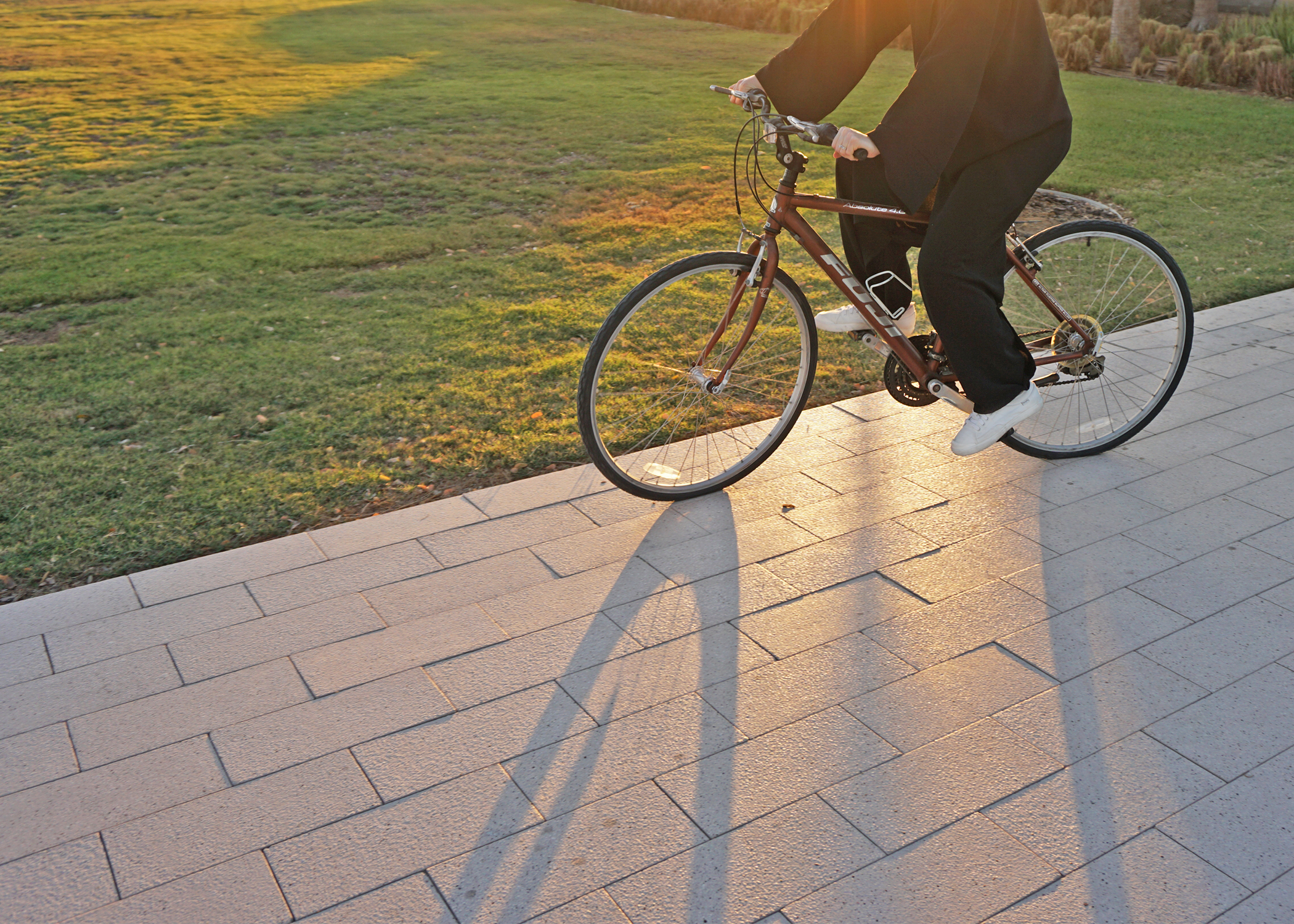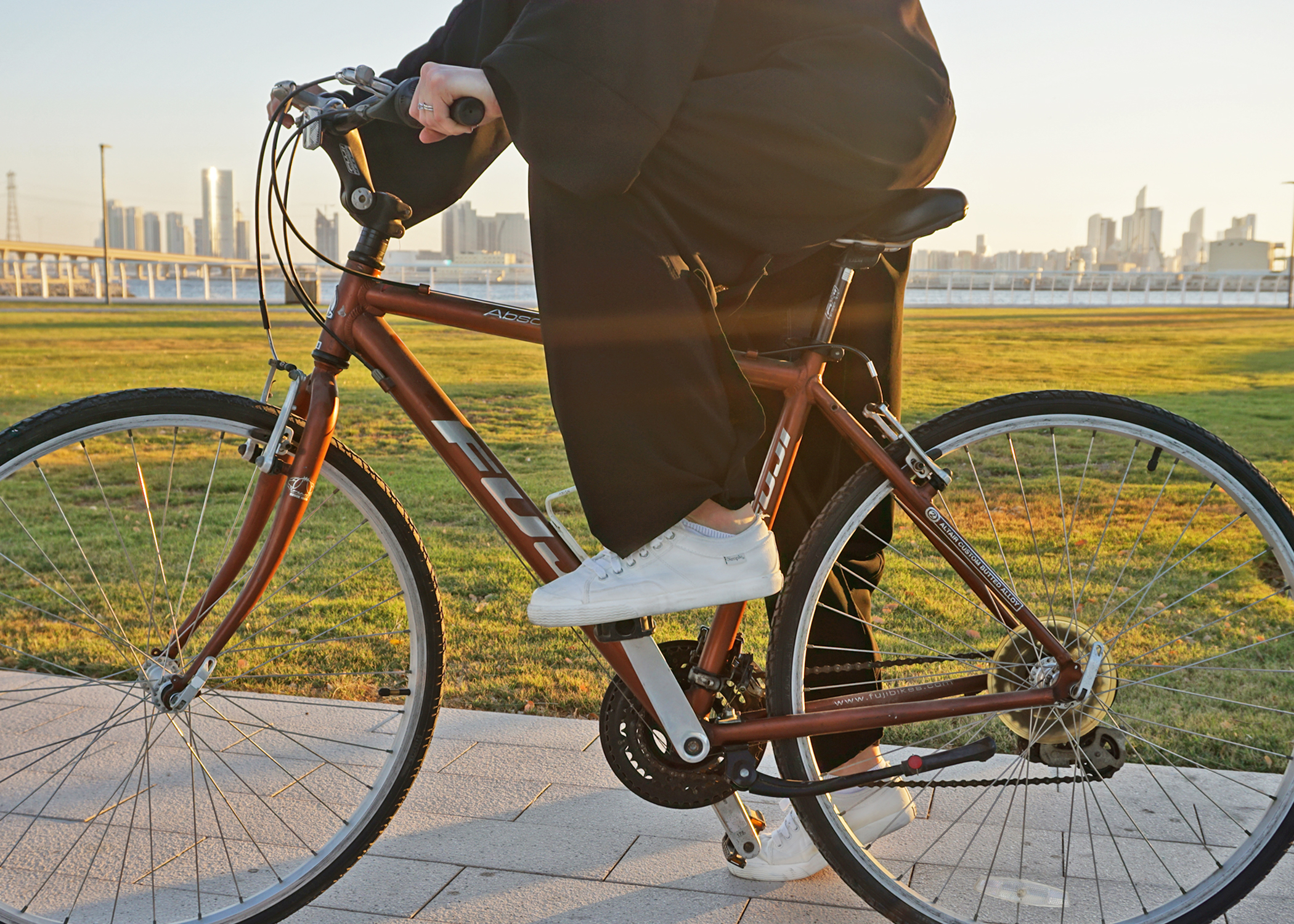
Convertible Abaya Design Research


What if a traditional garment could transform to meet the needs of a changing world? That's the question at the heart of a new convertible abaya design developed at NYUAD that enables women to cycle while maintaining their cultural identity and comfort.
In fall 2019, students gathered around a table at NYU Abu Dhabi's campus on Saadiyat Island. The Louvre museum sat just a few kilometers away—a pleasant walk in the sunny autumn weather. Professor Goffredo Puccetti posed a simple question: "How can you get to the Louvre today?" Of course, only by car, they said. But this seemed strange. On an island being developed as the future-thinking, cultural epicenter of Abu Dhabi, why were they limited to the carbon-emitting transportation of the past? Why couldn't they easily walk or cycle? What could they design to change that?
The Challenge
What began as a classroom assignment quickly revealed deeper barriers to cycling than just missing bike paths. Four students—Maitha Alghfeli, Sara Alanis, Vid Milaković, and Am Silruk—discovered that cultural factors played an equally important role.
Currently, cycling in the UAE is perceived primarily as athletic or leisure activity, not viable urban transit. But for women who wear the abaya as their daily clothing, there's an additional practical barrier: the long, loose, robe-like qualities of the garment fundamentally conflict with the physical movements of cycling. Women must remove their abayas or tie them up uncomfortably, often exposing themselves in public spaces or creating safety hazards with loose fabric near bicycle chains. In the team's initial survey of 74 respondents, half of the women who regularly wore abayas reported avoiding cycling specifically because of their garment.
"Even if women value cycling as an eco-friendly and healthy transport option, the cultural importance of wearing an abaya often overrides that value in practice," explains Erin Collins, who later expanded the project with support from NYUAD's CITIES Research Center.
The abaya is a powerful expression of Emirati identity. For the many women who choose to wear it daily, cycling simply isn't realistic. And in a nation committed to becoming a global leader in sustainable urban development, that's a problem worth solving.
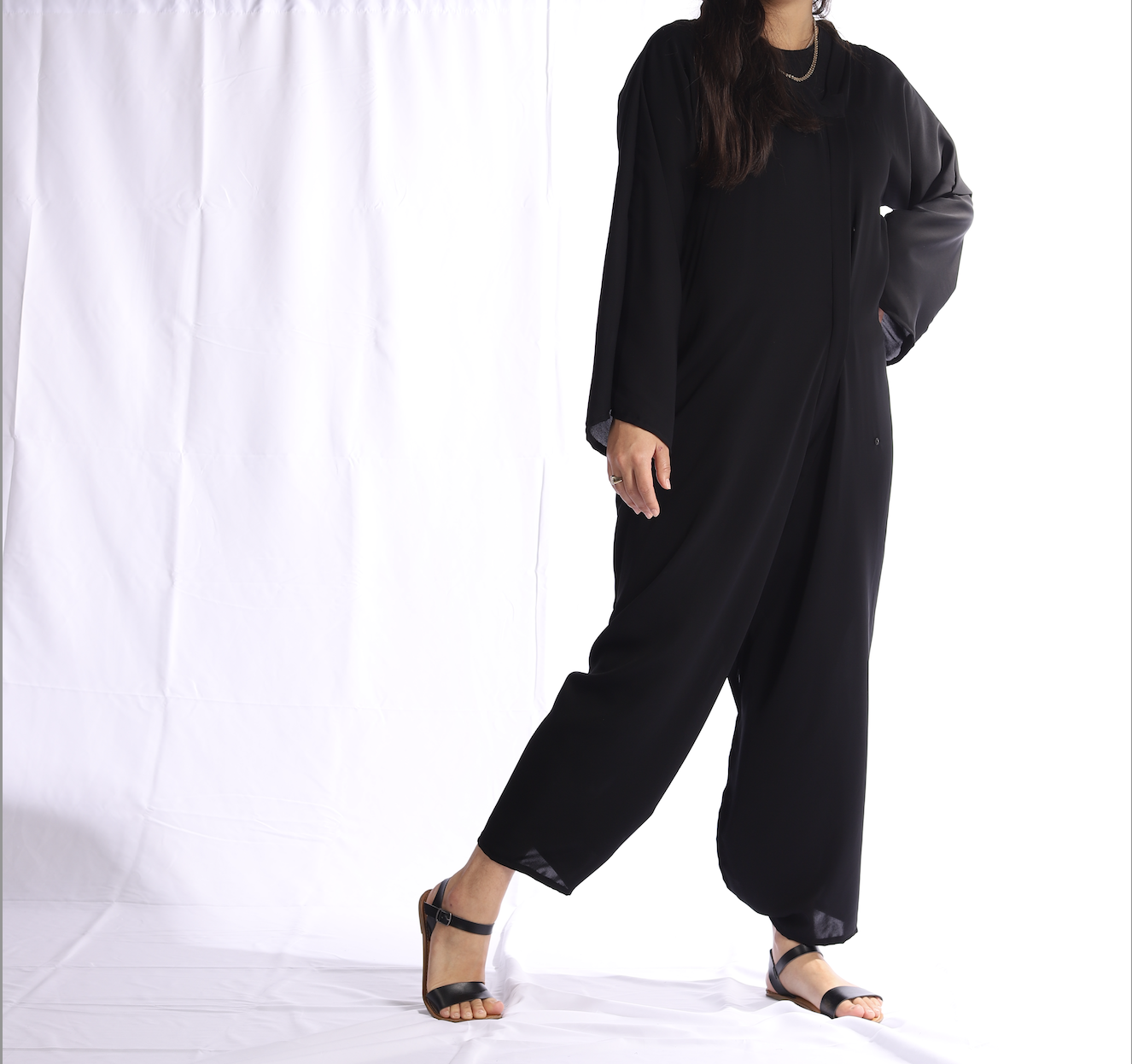
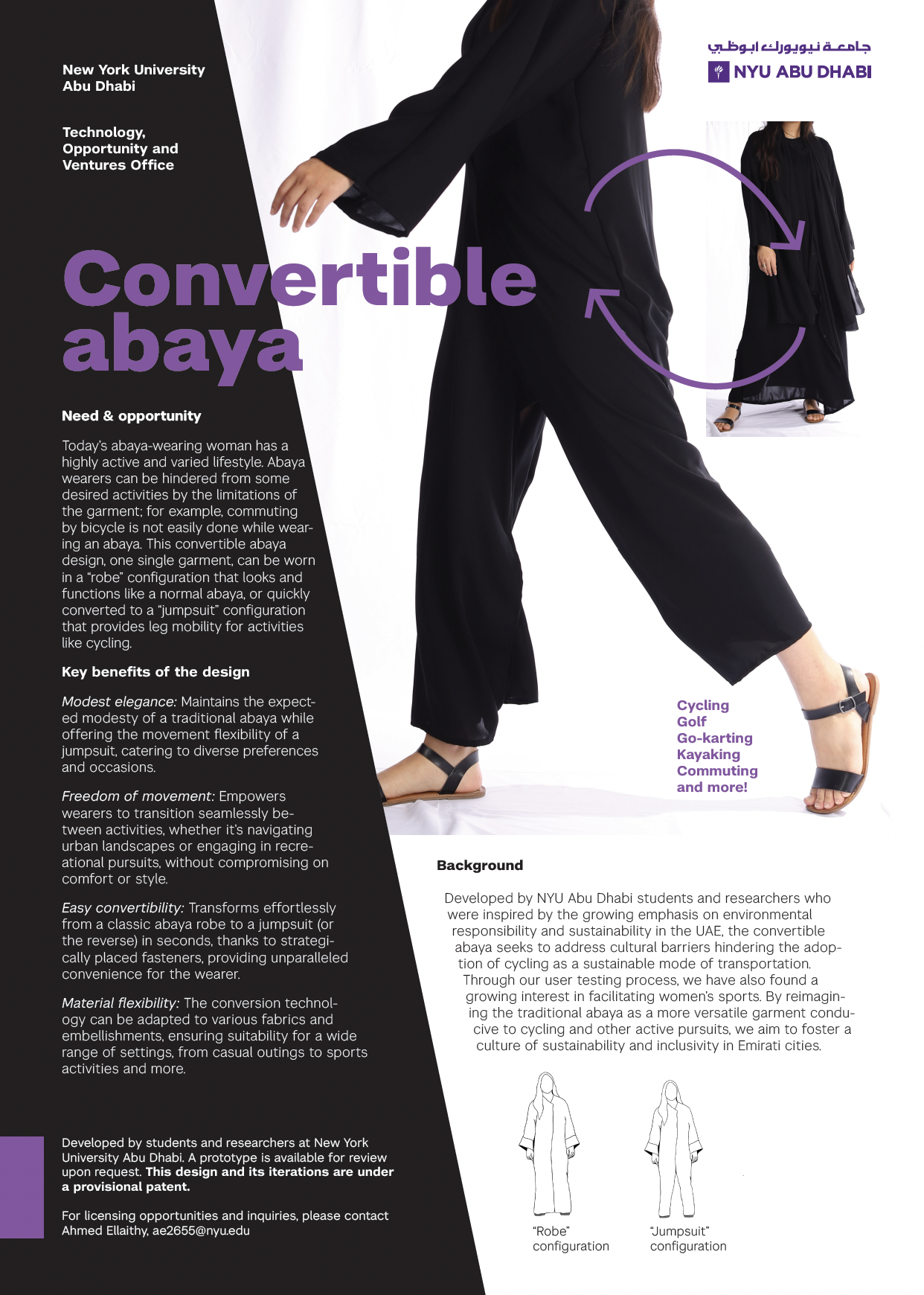
Designing Cultural Evolution
The student team formulated a provocative question: How might we maintain the cultural expression of the national dress, but redesign it to make cycling a viable transportation choice?
With funding from CITIES, the project team expanded to include researchers from NYU Abu Dhabi's arts and humanities division, including costume designer Judith Olson and design instructor Erin Collins. They adopted a practice-based design research approach—generating new knowledge through the act of designing itself.
The process involved:
- Producing dozens of sketches exploring different transformation mechanisms
- Developing quarter-scale mockups on model figures to test concepts rapidly
- Creating multiple full-scale prototypes
- Testing configurations with regular abaya-wearers
- Refining the design based on successes and failures of each iteration
How It Works
In its robe form, the Tahwheel abaya looks like a traditional front-opening abaya. But hidden snap fasteners enable a rapid transformation.
To convert for cycling:
- Unsnap the panels at waist level
- Wrap the fabric around each leg
- Re-snap at the top and bottom of each leg
The transformation takes seconds and can be done discreetly in public. The design maintains full modesty and coverage throughout, while keeping fabric close enough to the legs to provide safe cycling mobility. Converting back to robe form is equally quick, allowing seamless transitions at the start or end of a cycling journey.
Critical to the design's success: it doesn't look like "activewear" or a specialized garment. It can be part of a daily wardrobe, suitable for work, social gatherings, and public spaces, the same contexts where traditional abayas are worn.
"The abaya is able to adapt to our modernity," one 22-year-old Emirati interviewee explained during the research process. "Maybe this design will allow us to reconsider, rethink ways in which we could use the bicycle."
Why It Matters
The Tahwheel design does more than solve a practical problem; it demonstrates how cultural expressions can evolve to reflect changing social values without sacrificing identity.
The Emirati national dress has always been a living tradition. The modern abaya itself was standardized and adopted across the UAE only in the 1970s, as part of nation-building after independence. Throughout its history, the garment has adapted: from wool to lighter fabrics as those became available, from head-draping to shoulder-draping styles as women entered workplaces and education, from plain to embellished as fashion evolved.
"Emirati heritage can't be set in aspic," says Dr. Jane Bristol-Rhys, associate professor of anthropology at Zayed University. "The minute you put heritage in a museum, mark it dead. Heritage and traditions live on only as long as they can be adapted and included in people's changing lives."
Sustainability has become a defining value in the UAE, expressed through government initiatives like the UAE Energy Strategy 2050 and Abu Dhabi Vision 2030, and through growing public demand for environmental responsibility. In the project's expanded survey of 300 UAE residents, 42.9% indicated they would cycle more if circumstances allowed, with 37% citing unsuitable infrastructure and cultural constraints as primary barriers.
The Tahwheel abaya offers an elegant integration of this new national value into traditional cultural expression. It's one part of building a contextualized Emirati cycling culture, demonstrating that infrastructure alone isn't enough. Cultural shifts create the social demand that drives policy and development.
Next Steps
The design is currently under provisional patent, with plans to develop it into a product accessible throughout the Gulf region in collaboration with local fashion designers and brands.
This project opens questions that extend far beyond one garment. What would it mean if Emirati culture embraced cycling as normal, everyday activity? How might other design interventions support sustainable urban mobility while respecting cultural identity? What can this teach us about designing for cultural evolution in the face of global challenges?
As global communities confront climate change, we need locally contextualized solutions that create lasting change. This convertible abaya seeks to be one example of how design can help culture transform to meet the future, without losing sight of the past.
Project Team
Garment Researcher & Designer: Judith Olson (Instructor of Costume Design)
Lead Researcher: Erin Collins (Instructor of the Arts in Design)
Research Supervisor: Goffredo Puccetti (Associate Professor of the Arts)
Student Designers: Maitha Alghfeli, Sara Alanis, Vid Milaković, Am Silruk
Student Project Assistants: Varvara Snitko, Maitha Alshamsi, Megan Marzolf, Ekin Basaran
The design is confidential and currently patent pending. For collaboration inquiries, contact: erinkcollins@nyu.edu
This project was supported by NYU Abu Dhabi's CITIES Research Center.

